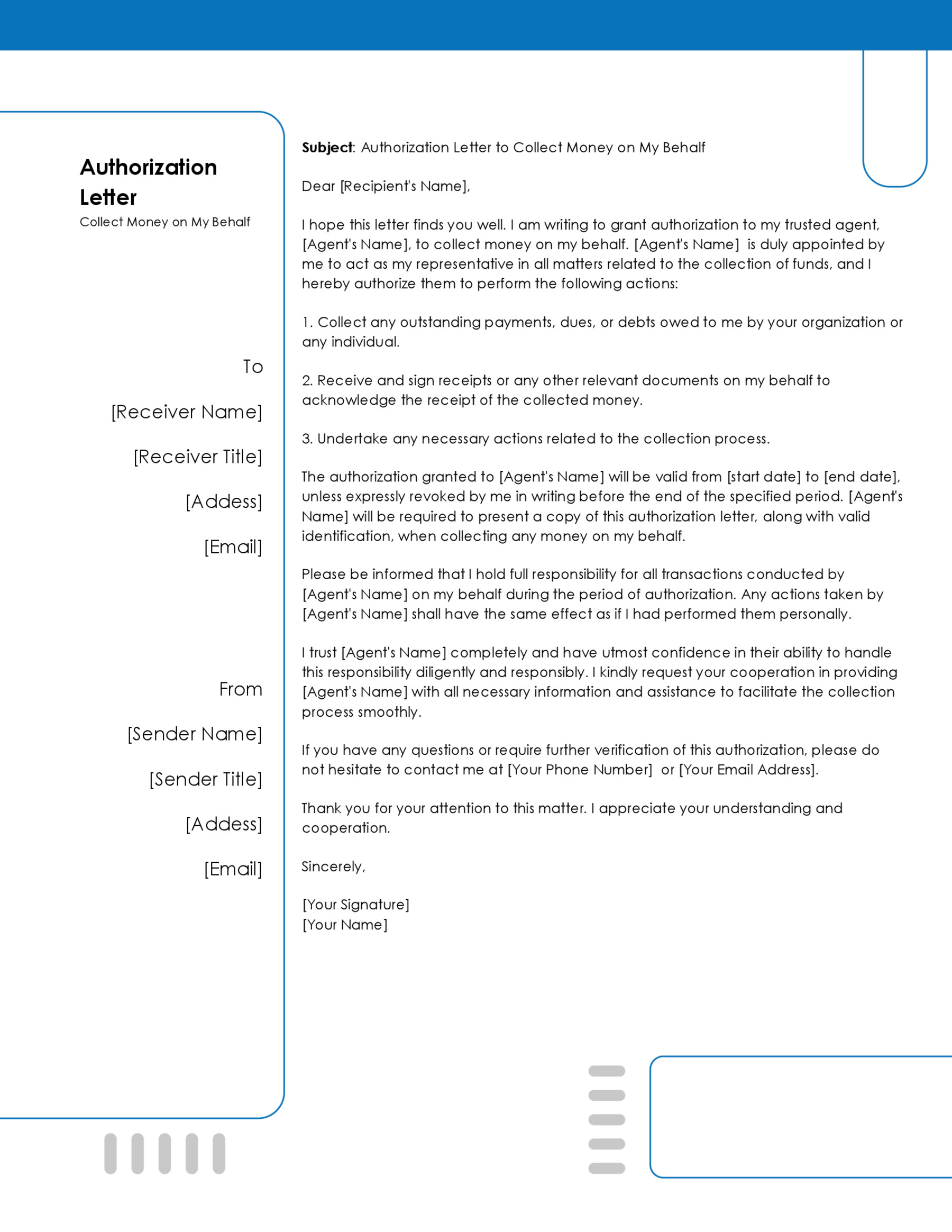As an architect, you are responsible for transforming building concepts into innovative structural plans that are functional, visually appealing, and meet clients’ expectations. If you are ingenious and have a robust technical design background, you can pursue a career in architecture and start looking for architectural opportunities at different architectural firms. While making your application, a cover letter is one of the crucial documents that should always accompany your resume.
This guide will examine the purpose of drafting a cover letter, how to format it, what to include, and the do’s and don’ts.
Free Templates
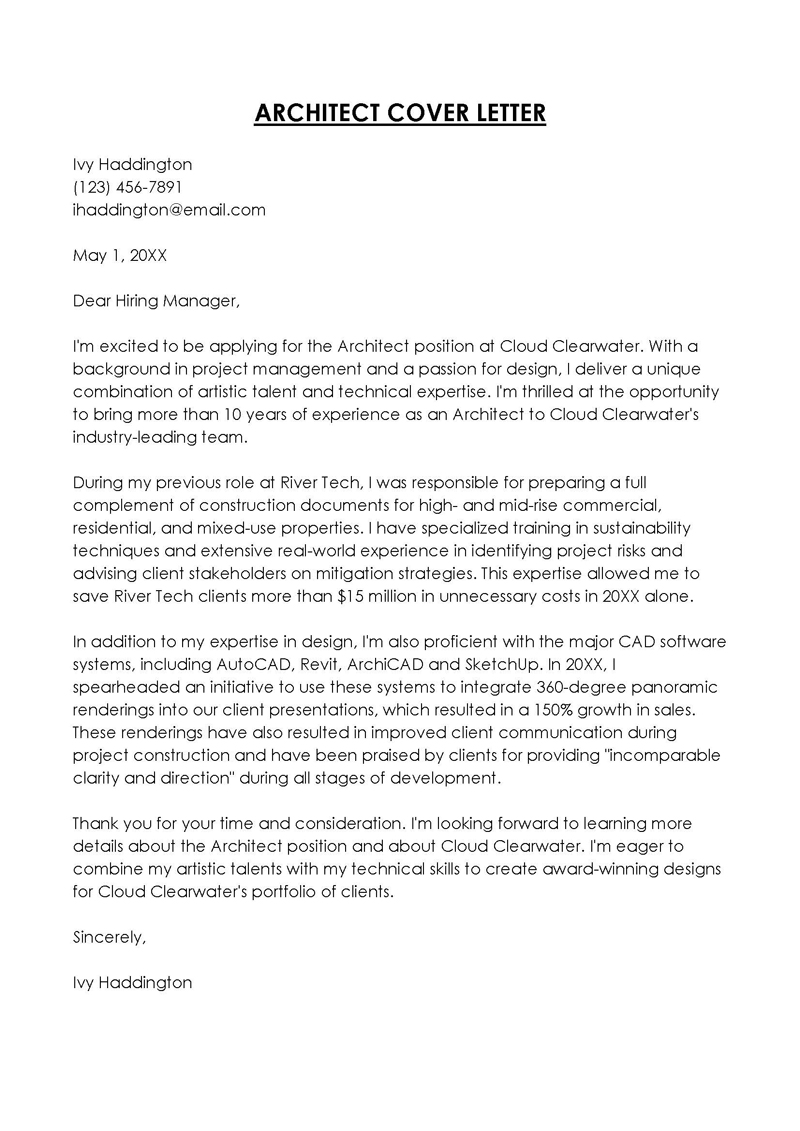
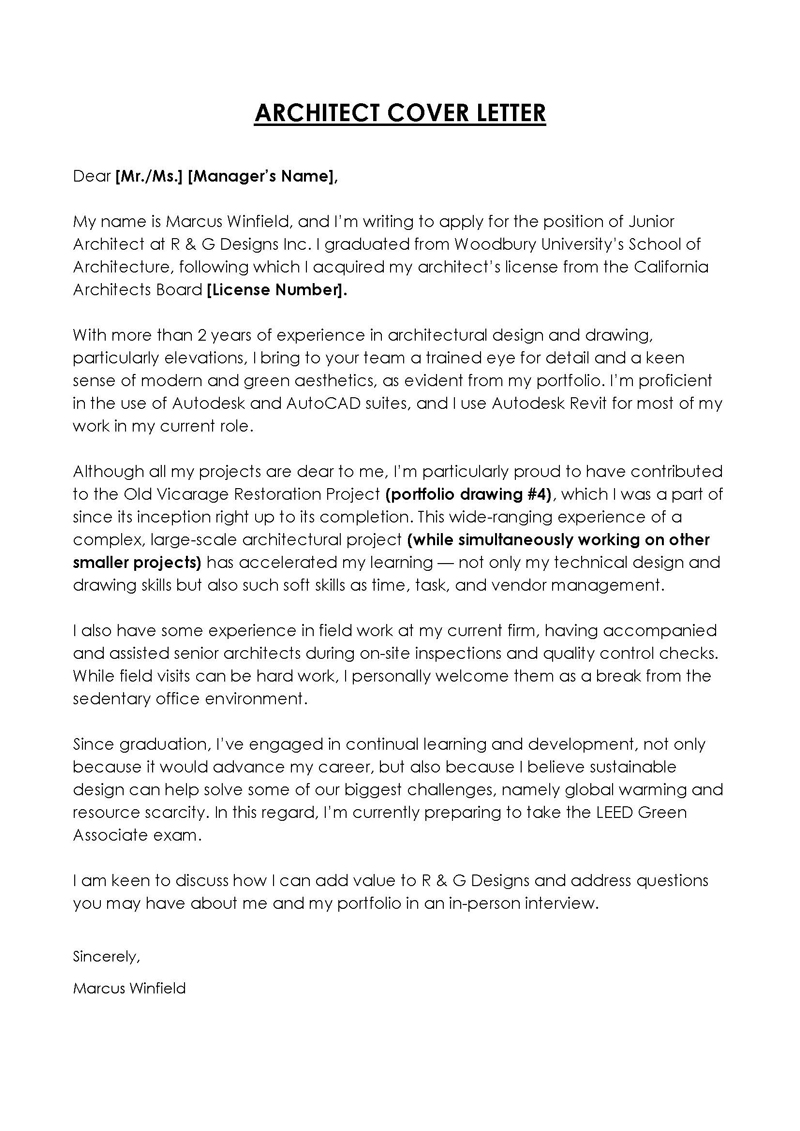
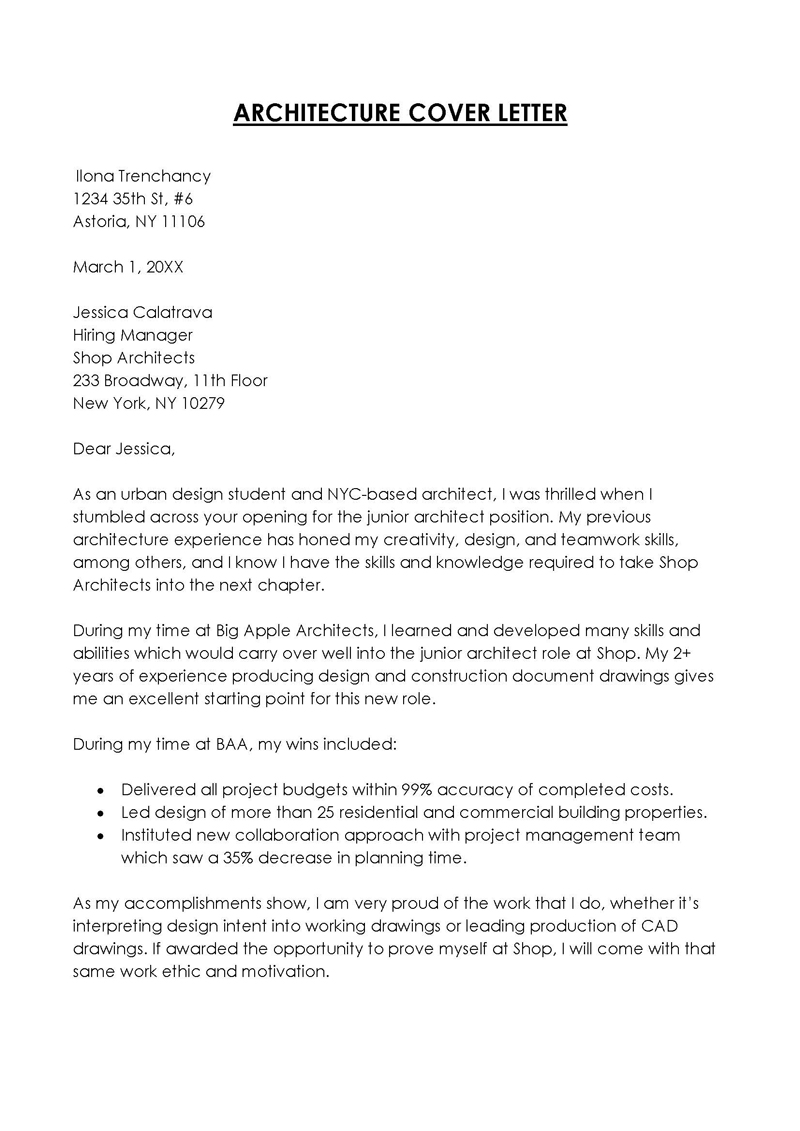
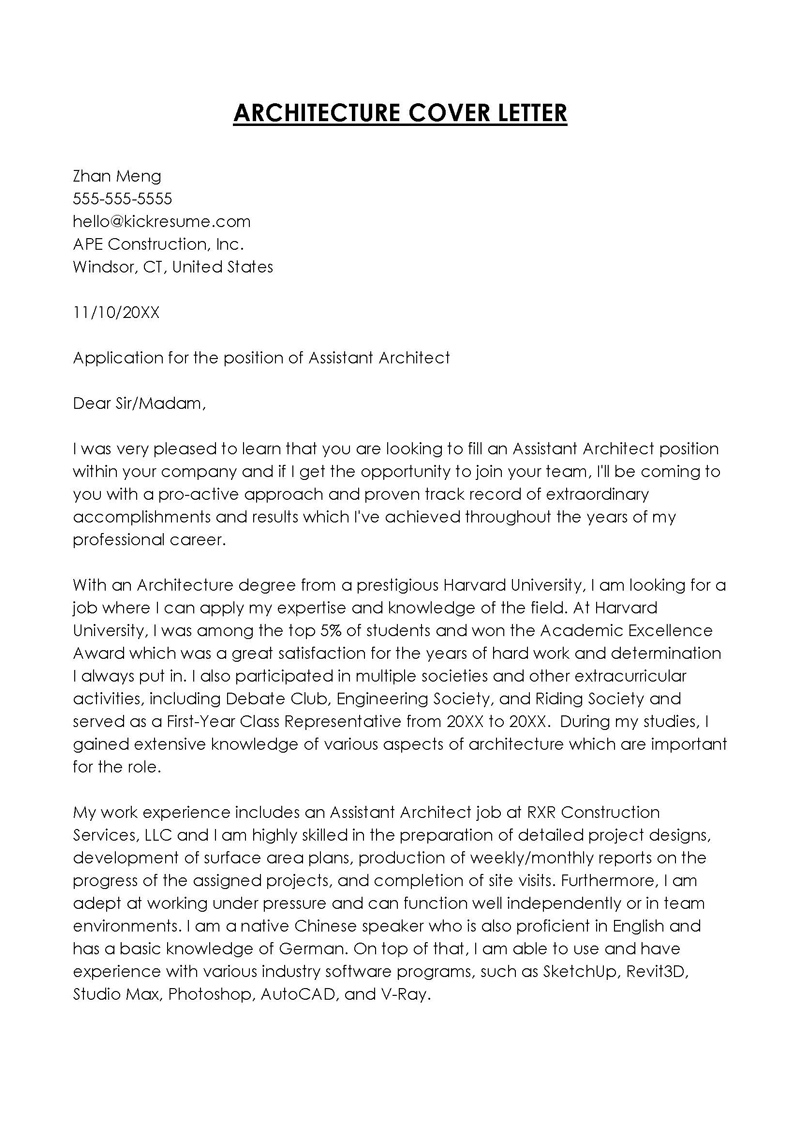
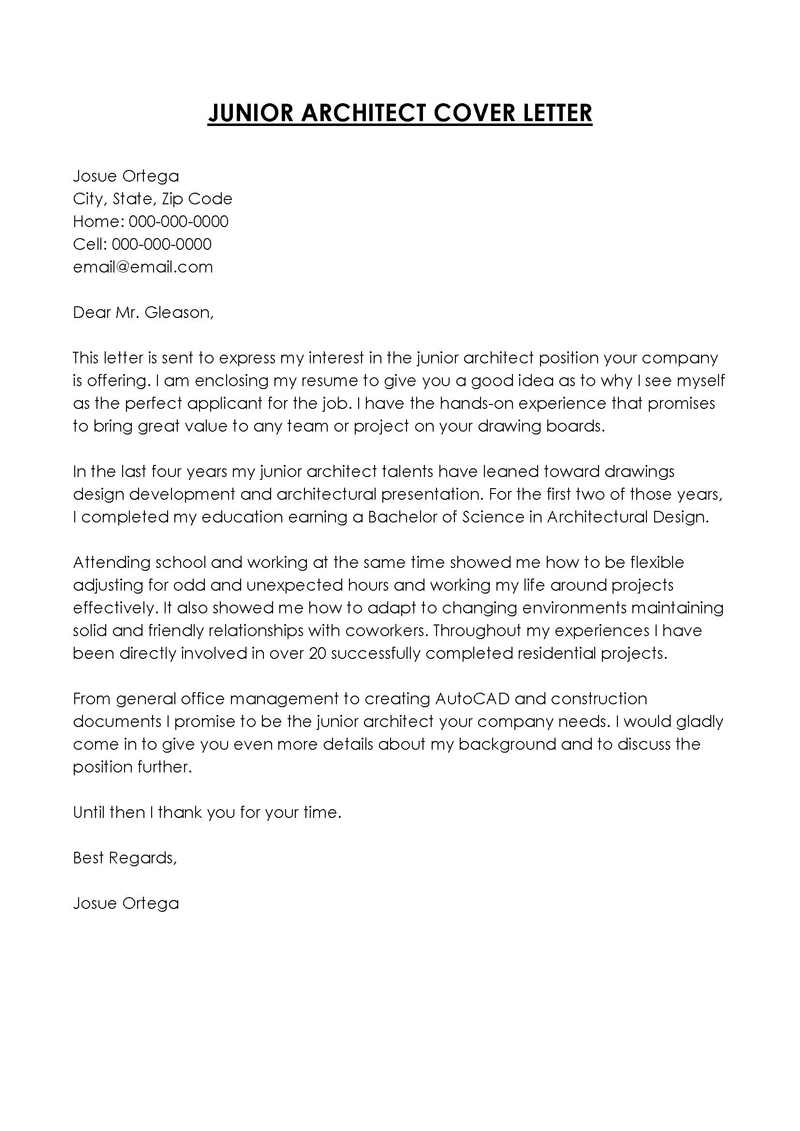
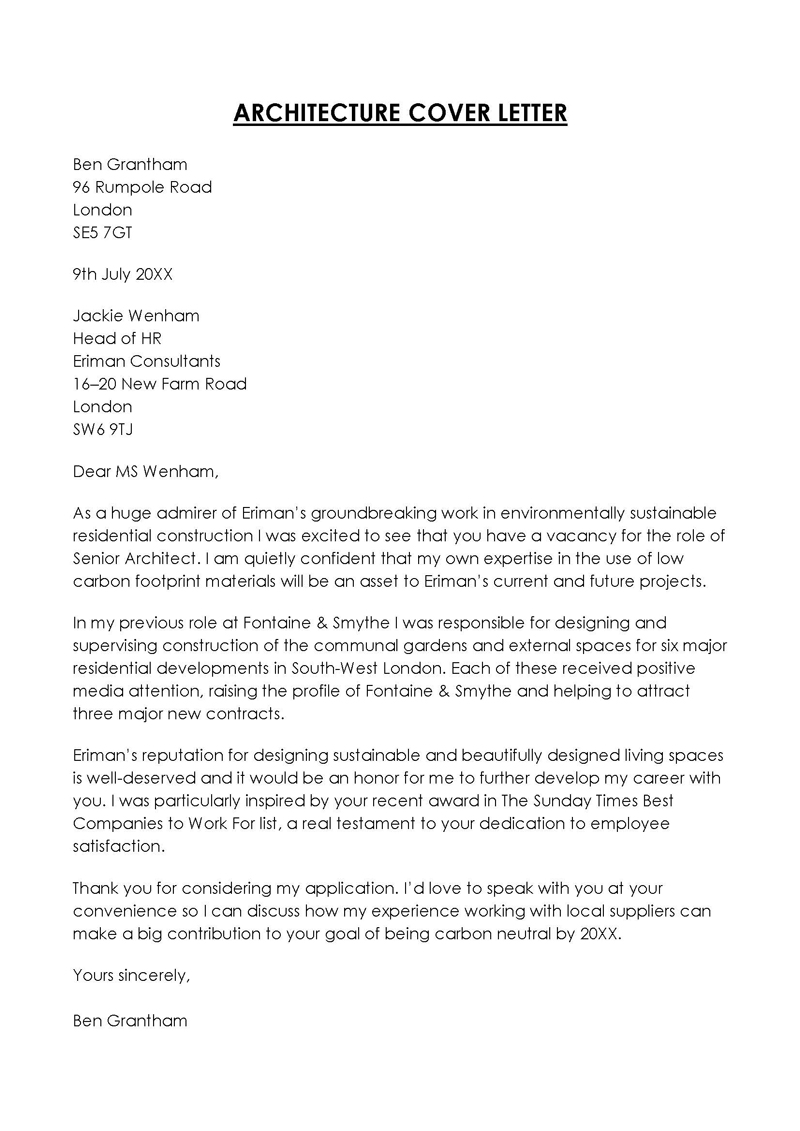
The Importance of a Cover Letter
A well-drafted cover letter brings out the first positive impressions that highlight your accomplishments and why you are the best candidate. It serves as a sub-par resume. Since a resume is written in a short and precise form, the cover letter gives you a unique opportunity to explain yourself and your achievements in detail.
In addition, this cover letter strengthens your job application by showcasing your knowledge in architecture practice and your passion for working for the firm. Cover letters are used to prove that you have conducted satisfactory research about the firm and fully understand the kind of talent they are looking to attract. An architect’s cover letter can be used when applying for entry-level architectural jobs to the senior-most positions.
There is a common myth that most hiring managers don’t read a cover letter. However, if you want your job application to stand out during the recruitment process and possibly get hired, you must accompany your resume with a well-drafted cover letter.
How do I Format It?
For you to craft a winning cover letter, you need to format it in the proper official structure by following the below guidelines:
- All the sections of the letter should be left-aligned.
- Single-space the letters while leaving a 1-inch gap on every side.
- Use an official font that aligns with what appears on your resume, such as Calibri, Times New Roman, Arial, etc.
- A complete cover letter should be brief and not more than one page.
Essential Elements of a Cover Letter
A well-written cover letter should highlight your core architectural proficiencies, past accomplishments, and the primary motivation pushing you to express your interest in working for this architecture firm.
It should include the following elements:
Header
The cover letter header is what appears first when the hiring manager opens it. Therefore, you must include your correct official name, address, contact information, date of writing, recipient’s name, job title, and address details. It’s a good professional practice to use an identical header for your resume and cover letter.
Introduce yourself and the job position
Introduce yourself in the first paragraph and be specific about the job title in which you are expressing interest. Then, list your top-most architectural achievements that align with the job description. In this way, the reader will better understand what the letter is about.
Mention relevant achievements and architectural skills
Highlight your unique achievements and other soft skills that align with the job description. You need to demonstrate your competence in essential architectural skills such as industrial design, CAD software, project management software, or map creation and design software. It would be best to convince the hiring manager that you have the right skills and good work ethic that benefit the role you intend to assume.
Show your passion for the job
It would be best to convince the hiring manager that you are the best architect candidate. Demonstrate your potential and enthusiasm to deliver outstanding results when given a chance, as evidenced by your past architectural accomplishments. Make the employer feel that you are highly motivated and have a personal passion that seamlessly integrates with the said architecture role.
Ask for an interview
Your closing statement is as important as your opening statement. This is where you emphasize why you are the most suitable candidate for the job and formally request an interview. In addition, mention the value your position will add to the organization.
Complimentary sign-off
This is the last thing to add when you officially close your letter, your closing remarks should be simple and focused on thanking the hiring manager for considering your application. You can then add “Best regards”, “Kind regards”, “Yours sincerely”, or any other synonym.
Postscript (optional)
Adding a postscript to your cover letter helps capture the hiring manager’s attention and showcase why you are the best candidate. It brings out your exclusive selling proposition by highlighting one distinctive quality that will grab the hiring manager’s attention and persuade them to choose you over other contestants.
Free Template Architect Cover Letter
[Your Name]
[Your Address]
[City, State, Zip Code]
[Your Phone Number]
[Your Email Address]
[LinkedIn Profile/Portfolio Link] (Optional)
[Date]
[Hiring Manager’s Name]
[Their Position, e.g., Senior Architect, Hiring Manager]
[Company Name]
[Company Address]
[City, State, Zip Code]
Dear [Hiring Manager’s Name],
I am writing to express my interest in the Architect position at [Company Name], as advertised on [where you found the job listing]. With a [Degree] in Architecture from [University Name] and [X] years of comprehensive experience in [specific types of projects or architecture fields, e.g., residential, commercial, sustainable design], I am excited about the opportunity to contribute to your team. My portfolio, which I invite you to review at [Portfolio Link], showcases a wide range of projects that highlight my proficiency in creating innovative designs, efficient space planning, and integrating sustainable practices into aesthetically pleasing environments.
In my role at [Previous Employer], I successfully led a team on the [Project Name], a [Type of Project], from conceptual design through to completion. This project not only enhanced my skills in [mention specific software, e.g., AutoCAD, Revit, SketchUp] but also demonstrated my ability to manage timelines, coordinate with construction teams, and adhere to budget constraints while maintaining the highest quality of work.
Highlights of my career include:
- Designing [describe a significant project you worked on], which received [any awards or recognition].
- Implementing sustainable architectural solutions that led to [specific outcome, e.g., LEED certification, energy savings].
- Collaborating with cross-functional teams to ensure project specifications and standards are met with precision.
My design philosophy centers around creating spaces that are not only functional and sustainable but also enrich the lives of those who interact with them. I am deeply passionate about [specific aspect of architecture, e.g., innovative use of materials, historic preservation, user-centric design], and I believe that my background aligns with [Company Name]’s mission to [company’s mission related to architecture].
The architecture industry’s dynamic nature has ingrained in me the importance of adaptability and lifelong learning. I am committed to staying abreast of the latest trends and technologies in architecture, as evidenced by my continuous pursuit of [mention any additional certifications, courses, or software proficiencies]. My adaptability was highlighted when I [describe a situation where you had to quickly adapt or learn something new], resulting in [positive outcome].
I am enthusiastic about the possibility of bringing my unique blend of skills, experience, and passion for architecture to the Architect position at [Company Name]. I am drawn to this opportunity because of [specific reason related to the company or its projects], and I am confident in my ability to make a significant contribution to your team. I look forward to the opportunity to discuss how my background, professional ethos, and vision align with the goals of [Company Name].
Thank you for considering my application. I am eager to provide further details about my experience and discuss how I can contribute to the innovative projects at [Company Name]. Please feel free to contact me at [Your Phone Number] or via email at [Your Email Address] to schedule a conversation.
Warm regards,
[Your Name]
Samples
Get inspired by the following Cover Letter Examples and use it to write your own:
Sample 01
Dear Mia Thompson,
I am writing to express my deep interest in the Residential Architect position at DreamBuild Architects, as advertised on the American Institute of Architects (AIA) job board. With a Master of Architecture from Columbia University and over 8 years of dedicated experience in residential design, I am eager to bring my expertise in creating bespoke living spaces to your innovative team. My portfolio, accessible at [Portfolio Link], displays a comprehensive array of projects that reflect my commitment to designing homes that are not only visually striking but also highly functional and sustainable.
At LuxeHomes Design Studio, I spearheaded the design and execution of over 20 high-end residential projects, including single-family homes and multi-unit dwellings. These projects ranged from modern urban residences to expansive rural estates, each designed with a focus on client vision, environmental sustainability, and integration with the surrounding landscape.
Noteworthy achievements include:
- The Green Haven Project, a sustainable home in upstate New York that achieved LEED Platinum certification, featuring rainwater harvesting, solar panels, and passive heating and cooling strategies.
- A multi-family residential complex in Brooklyn, praised for its innovative use of space and community-focused amenities, which enhanced the social and living experience for its residents.
My guiding principle in design emphasizes that a home must truly represent the individuality and lifestyle of its occupants. I aim to create environments that are visually appealing and custom-fit, ensuring a collaborative process with each client. This strategy has reliably produced satisfied clients and has been crucial in attracting repeat engagements and referrals to our practice.
Recognizing the ever-evolving nature of residential architecture, I am committed to staying at the forefront of design trends, sustainable practices, and technological advancements. I regularly participate in professional workshops and seminars to refine my skills in cutting-edge software such as Revit and Rhino, and I am currently pursuing a certification in sustainable design to further enhance my knowledge of green building practices.
I’m excited about the chance to enhance DreamBuild Architects’ outstanding reputation in residential architecture. Your firm’s dedication to eco-friendly design and creative methods to housing projects deeply appeals to me. Given my experience, abilities, and keen interest in residential design, I believe I would be a great asset to your team.
Thank you for considering my application. I am looking forward to the possibility of discussing this exciting opportunity with you in more detail. Please feel free to contact me at 555-987-6543 or via email at ava.chen@email.com to schedule a meeting at your convenience.
Warm regards,
Ava Chen
Sample 02
Dear Diana Ross,
I am reaching out to express my interest in the Commercial Architect position at Innovative Spaces Inc., as highlighted in the latest edition of the Architectural Review. With a Bachelor of Architecture from the University of Texas at Austin and a decade of experience specializing in the design and development of cutting-edge commercial spaces, including office buildings, retail centers, and mixed-use developments, I am excited about the opportunity to contribute to your team’s success. My extensive portfolio, which I invite you to view at [Portfolio Link], showcases projects that exemplify my commitment to creating functional, sustainable, and aesthetically compelling commercial environments.
During my tenure at CityScape Architects, I led the architectural design for the EcoTech Office Park, an ambitious project that integrated smart building technologies with green spaces to promote sustainability and occupant well-being. This project, now a benchmark for eco-friendly commercial design in the region, has received several accolades, including the Green Design Award from the National Architectural Board.
My role involved:
- Directing the project from initial concept through to completion, ensuring all design elements adhered to sustainability goals without compromising on functionality or aesthetic appeal.
- Collaborating closely with engineers, interior designers, and sustainability consultants to create a holistic design strategy that maximized energy efficiency and user satisfaction.
- Utilizing advanced design software, such as AutoCAD, Revit, and SketchUp, to produce precise architectural drawings and 3D models, facilitating clear communication and efficient execution of design concepts.
My design philosophy is based on the belief that commercial architecture should not only serve a functional purpose but also contribute positively to the urban landscape and community. I prioritize innovative use of materials, natural light, and open spaces to create buildings that inspire and engage. This philosophy aligns with Innovative Spaces Inc.’s mission to redefine commercial architecture by integrating forward-thinking design with practicality and environmental consciousness.
Understanding the dynamic nature of architectural trends and technologies, I am committed to continuous professional development. I have completed advanced certifications in sustainable design and building information modeling (BIM), keeping me at the forefront of industry best practices. This commitment to learning ensures that I bring the most current and effective design solutions to every project.
I am enthusiastic about the possibility of joining Innovative Spaces Inc. and contributing to your portfolio of groundbreaking commercial projects. I am inspired by your firm’s dedication to sustainability and innovation, which resonates with my professional ethos and aspirations. I am confident that my experience, skills, and passion for commercial architecture will make me a valuable asset to your team.
Thank you for considering my application. I am looking forward to discussing how I can contribute to the future success of Innovative Spaces, Inc. Please feel free to contact me at 512-456-7890 or via email at ethan.martinez@email.com to arrange a conversation at your convenience.
Warmest regards,
Ethan Martinez
Analysis
The cover letters for positions at DreamBuild Architects and Innovative Spaces Inc. are notably effective for several reasons. Firstly, both letters adeptly tailor the candidates’ experiences and accomplishments to the specific roles and companies, demonstrating a clear understanding of the job requirements and organizational values. For instance, the first letter highlights the candidate’s experience in sustainable residential design, aligning with DreamBuild’s focus on eco-friendly projects. The second letter emphasizes expertise in commercial architecture with a sustainable edge, matching Innovative Spaces Inc.’s mission.
Each letter includes specific projects that showcase the candidates’ skills and impacts, such as the LEED Platinum-certified home and the EcoTech Office Park, providing concrete evidence of their capabilities. These examples not only underline the candidates’ qualifications but also their alignment with the firms’ dedication to sustainability and innovation.
Furthermore, the letters express genuine enthusiasm for the opportunities and articulate how the candidates’ professional philosophies resonate with the companies’ goals. This personalization and detailed demonstration of fit make the letters compelling. By inviting further discussion, the candidates effectively open the door for interviews, positioning themselves as valuable assets to the firms. Within a concise format, these letters manage to convey the candidates’ suitability and eagerness to contribute to the companies’ successes.
Do’s and Don’ts
When drafting your cover letter, there are specific, crucial guidelines that you need to adhere to so that your cover letter can be persuasive enough to grab the attention of the hiring manager.
Do’s
Ensure you apply the following tips when writing a cover letter:
Emphasize attention to details
As an architect, you must be a hands-on person who pays attention to details. Architecture projects must be delivered strictly according to the laid-out specifications. Demonstrate that you can handle various architecture tasks, including drawing and designing, interpreting project blueprints, drafting contracts, preparing budgets, and delivering positive results.
If you have successfully undertaken any of the above tasks before, include it in your cover letter as evidence that you can pay close attention to details and deliver as per the project objectives and specifications.
Keep it brief
Remember, the hiring manager will have many applications to review. The easiest way to grab their attention is to draft a well-structured cover letter that is clear and straight to the point. The length of your cover letter should not exceed one page/ 3-4 paragraphs.
Strong start
Since the letter will be scanned, your opening statement should grab the hiring manager’s attention by highlighting your area of competence and experience levels. A first positive impression will motivate them to read the rest of the letter.
Address to a specific person
Make sure the recipient of your cover letter is well-stated. It should be addressed to the hiring manager. You can do an online search or engage the company management directly to get the name and address of the hiring manager. If you can’t get the details of the hiring manager’s name, you can pick a neutral addressee name such as “Dear Hiring Manager” or even “To Whom It May Concern”.
Market yourself
It should summarize your key achievements that align with the job descriptions. In addition, outline your essential soft skills to make your candidature unique and more appealing. A cover letter adds “butter” to your resume, and therefore, you should maximize every opportunity to market yourself as the best candidate for the job.
Include testimonials
Include one or two testimonials from your former manager or co-worker to demonstrate that what you have indicated in your cover letter is authentic. A referenced cover letter carries more weight than one that doesn’t.
Proofread
An architect’s cover letter with grammatical errors will turn off hiring managers. In addition, it creates a negative first impression, and you can miss a job opportunity. This is why you must always proofread to ensure there are no spelling errors. If you are still in doubt, consider sending it to your friend so that they can help you highlight areas that you need to edit and make improvements.
Don’ts
The following are some common mistakes that you should avoid when drafting your cover letter:
Writing irrelevant content
Avoid vagueness. Your cover letter should be brief and concise. Only highlight the significant achievements that align with the job description.
Using emotions and abbreviations
An architect’s cover letter is formal, and it should be written in the same format. Abbreviations and words that depict emotions should not be used to maintain professionalism.
Focusing too much on yourself and using “I”
Instead of focusing too much on yourself, emphasize addressing the job description’s content and convincing the hiring manager why you are the best candidate for the job. Only use the word “I” where it’s essential.
Giving red flag details
Minimize exposing your past weaknesses and work-related challenges, as this will only paint a negative picture in the hiring manager’s mind.
Using passive tone
Instead of waiting for the hiring manager to reach out, consider giving them a timeline whereby you will then make a call or send an email to inquire about your applications’ status.
Using generic letters
Every architecture job opening is different, and it comes with its requirements. Avoid using generic cover letters and instead, prepare a customized cover letter for each job application
Oversharing and overstretching the letter
Being brief and concise is the rule of the game. Avoid using complicated terminologies and complex sentence structures that are hard to comprehend.
Key Takeaways
Here we have summarized a few key takeaways to help you write the most convincing cover letter:
- Writing a customized architect cover letter for every new architect job opening is the surest way to create a positive first impression.
- Your introduction statement should be well-structured and captivating to encourage the reader to go through the entire cover letter.
- A well-drafted cover letter strengthens your resume and allows the hiring manager to feel your personality, proficiency, experience level, and motivation for applying for this job.
- A powerful closing statement in your cover letter is also fundamental to helping hiring managers decide.
- Adding a postscript after you have appended your signature is another excellent strategy for grabbing the hiring manager’s attention so that they can give your application meticulous consideration.
- A winning cover letter is one that is authentic, well-formatted, and showcases the applicant’s in-depth understanding of the job title and the company’s core objectives.











